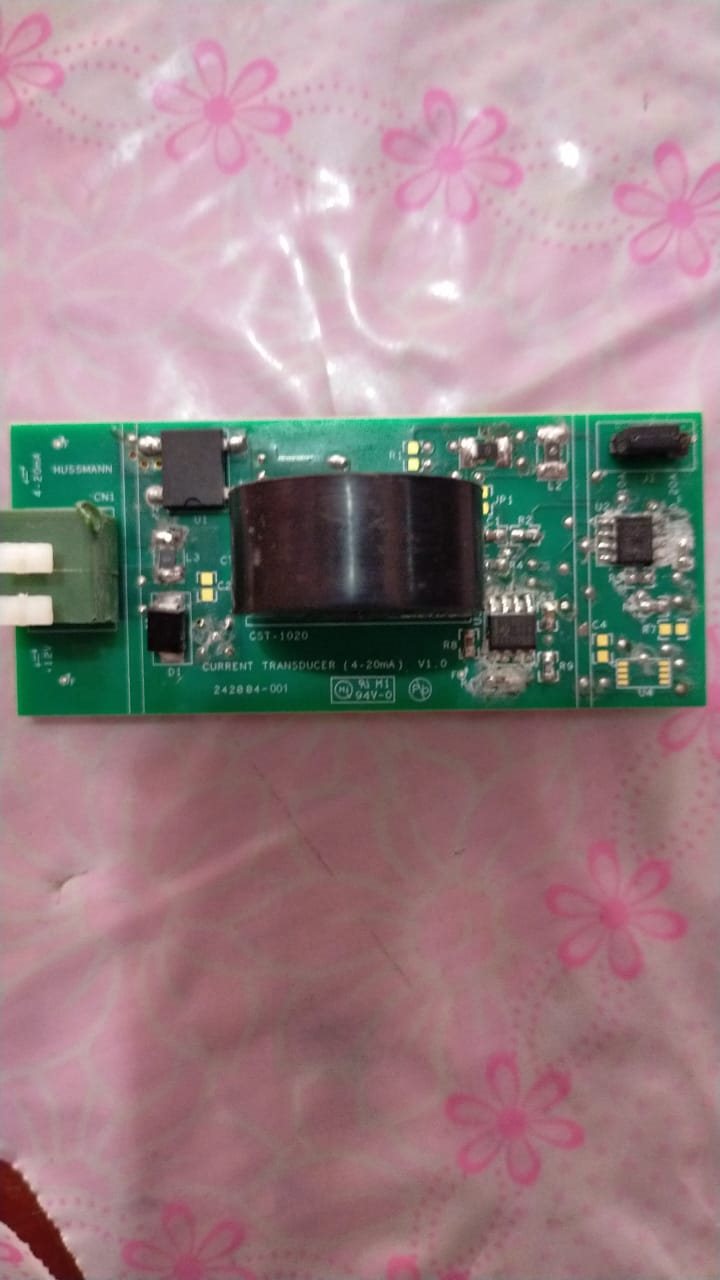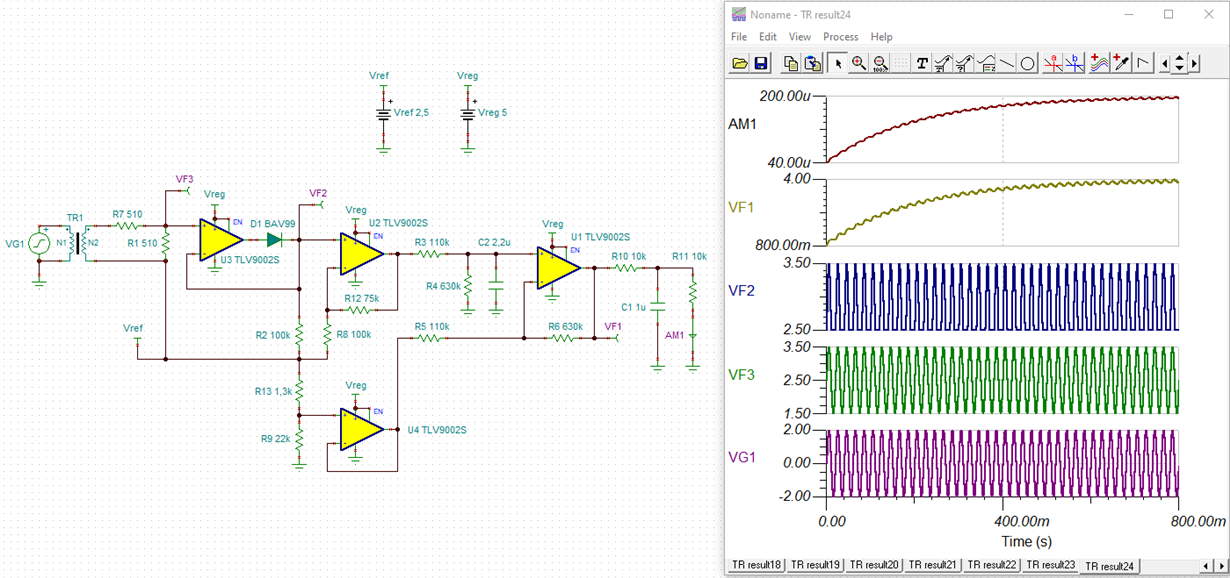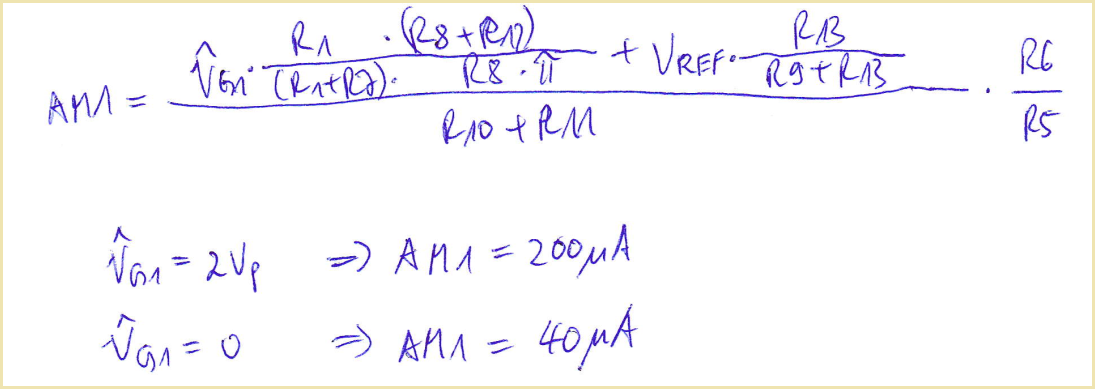Other Parts Discussed in Thread: XTR115, , STRIKE
Hello,
I have made AC (0-1V) to DC (40-200 uA) converter to interface with XTR115 which is basically drive 4-20mA output based on input AC signal(Current transformer used to generate AC). The circuit is attached to generate 40uA -200uA from 0-1V ac signal. This circuit was originally designed by Kai (Texas technical support person). I made this circuit in a General purpose PCB and it is working very good.
Now I have fabricated the pcb based on our required size(73x31mm), and assembled the same components. But It does not work and the circuit is 100 %same as attached circuit (working good in general purpose pcb) . I could see the following difference between general purpose pcb board and fabricated PCB when all the components mounted(In circuit).
General purpose PCB Fabricated PCB(Properly routed)
R2: 99.7k ohm R2: 86 K ohm
R8: 90.7 K OHM R8 : 86K ohm
R12: 196k ohm R12: 176 kohm
R3: 98.8 k ohm R8: 94 k ohm
R4: 268 k ohm R4: 218 k ohm
No vias(Made using wire) around 16 vias in the PCB ( Fabricated PCB). some vias near to R2,R8,R12,R3,R4)
My question is, Should i follow any critical guidelines like length matching, less vias, track thickness, less temperature to solder when i design and fabricate PCB ?
I made minimum track width is 20mil(signals), power track width is minimum 40 mil and contain 16 vias (0.5mm) near to TLV9002. I surprise why it is not working.
Can any one please help me out to solve this issue?
Regards,
Winiston.p






